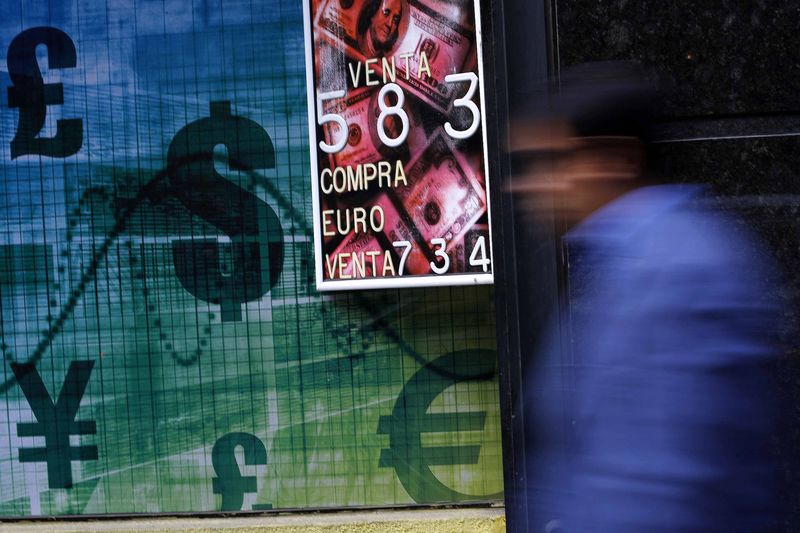By Swati Pandey
SYDNEY, May 7 (Reuters) - The Australian dollar edged up on Thursday, helped by an unexpectedly large trade surplus for March on the back of mineral exports, but worries over weak consumption in top trading partner China capped gains.
The Australian dollar AUD=D4 was last up 0.2% at $0.6419, trading in a snug range of $0.6373 and $0.6476 this week.
Data showed Australia's trade surplus ballooned to a record in March as shipments of iron ore to China surged, while exports of gold more than tripled amid a global rush for the safe haven metal. bumper haul meant the surplus for the entire first quarter climbed 41% to A$19 billion.
"The first quarter gross domestic product (GDP) will receive a large boost from the trade data," Citi economist Josh Williamson wrote in a note.
"Importantly ... real net exports are now likely to be positive for GDP growth by 0.3 percentage points," Williamson added. His previous estimate was for a 0.4 percentage point subtraction from growth.
"So the change means that our central Q1 GDP forecast improves from -1.2% to -0.5%."
The New Zealand dollar NZD=D4 was up 0.1% at $0.6016, tucked in a narrow range of $0.5995 to $0.6076.
The outlook for the two currencies was muddied by weak data from China which showed the country's service sector activity remained mired in contraction in April.
In another sign of weak consumption, China's imports dropped a larger-than-expected 14.2% from a year ago. Aussie and kiwi have been resilient in recent weeks despite a rise in risk aversion.
Helping to explain the relative strength, analysts at ANZ Banking Group noted the performance of Australia and New Zealand on a number of measures to rank countries and their response to the coronavirus pandemic.
The ranking showed both countries in a solid position as they have been able to keep infections and the death rate low enough to not overwhelm their healthcare systems.
That has also helped them gradually ease some of the strict "social distancing" measures and consider re-opening their respective economies, bolstering expectations they would rebound and recover rapidly in the second half of the year, they said.
The kiwi climbed 2.7% in April while the Aussie gained more than 6%.
New Zealand government bonds 0#NZTSY= were up a shade, sending yields 2 basis points lower in the short end of the curve.
Australian government bond futures were mixed, with the three-year bond contract YTTc1 rising half a tick to 99.75. The 10-year contract YTCc1 eased 2 ticks to 99.07.
